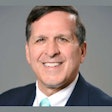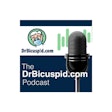Overall spending on dental care has remained flat in recent years, despite the fact that per patient dental spending by baby boomers and seniors has increased, according to an ADA analysis.
Two research briefs released last month by the ADA's Health Policy Resources Center (HPRC) show that adult dental visits have declined from 2000 to 2010, leading to less spending on dentistry and oral care, according to an ADA press release.
The declines in both dental spending and visits predate the economic crisis of 2008, the ADA noted.
The dental economy is in a major transition, said Marko Vujicic, PhD, HPRC managing vice president and lead author of the briefs. Dental spending has not rebounded since the end of the recession and has been stagnant, on a per capita basis, since 2008, he said.
In 2011, dental spending accounted for 4% of overall national health expenditures, down from 4.5% in 2000, according to HPRC analysis of data gathered from the U.S. Centers for Medicare and Medicaid Services (CMS), the U.S. Bureau of Economic Analysis, and the U.S. Census Bureau.
The growth rate for dental spending has also slowed in recent years. Between 1990 and 2002, per capita dental spending grew by 3.9% per year after adjusting for inflation, a rate that fell to 1.8% between 2002 and 2008. Since 2008, the per capita dental expenditure growth rate declined 0.3%, while overall health spending grew by 1.6%.
In 2003, 41% of adults reported going to the dentist during the prior year, according to the HPRC. That figure declined to 37% in 2010. Children, however, visited dentists more often between 2003 and 2010, but since their dental care tends to be less expensive than adults, it did not result in greater dental spending overall.
While overall dental expenditures have remained flat, the HPRC analysis shows that spending by baby boomers and the elderly is increasing. Between 2000 and 2010, seniors' annual spending on their dental care increased from $655 to $796. The HPRC credits the increase to advances in preventive and restorative dental care, leading to greater numbers of elderly retaining their teeth.
The U.S. Centers for Disease Control and Prevention reports that the number of adults missing all or some of their teeth dropped from 50.2% in 1999 to 43.6% in 2010, noted ADA President Robert Faiella, DMD, MMSc. But fewer adults are utilizing dental care, many young people can't afford oral care, and the number of people who turn to hospital emergency rooms for dental problems is rising, he added.
"We need to find creative solutions to improve access to care for millions of Americans and reverse these recent trends," Dr. Faiella said.


















